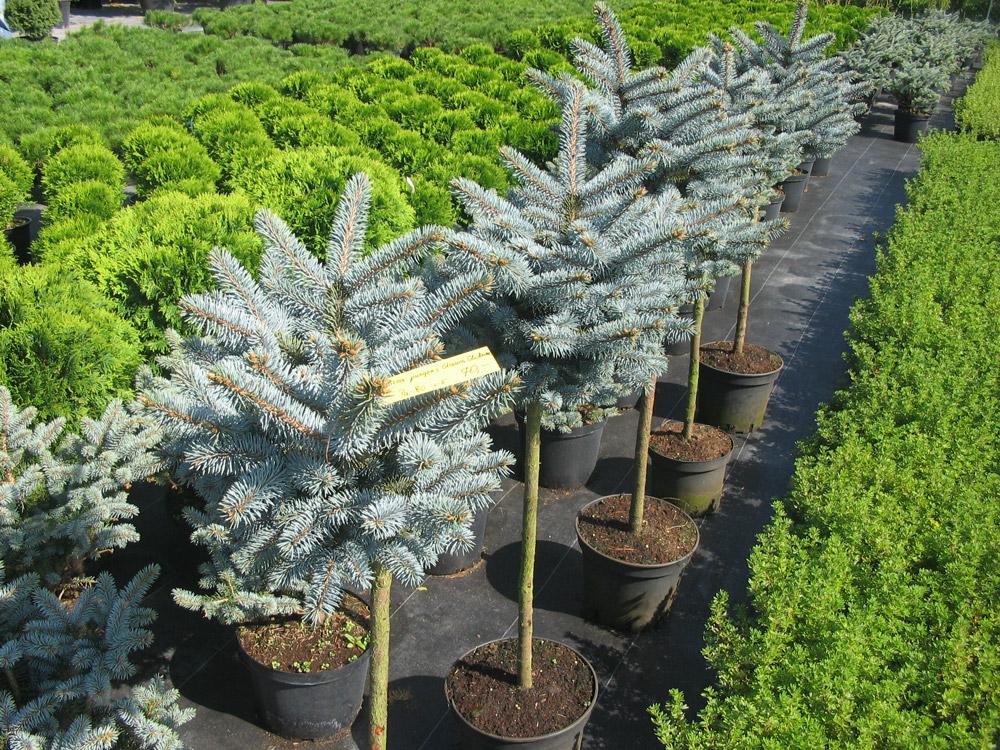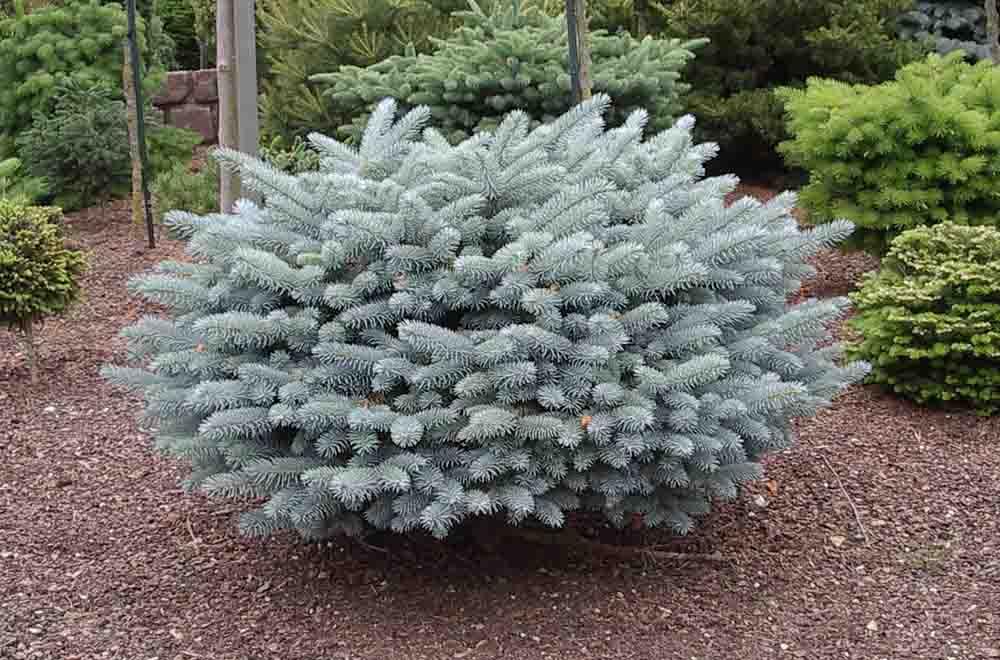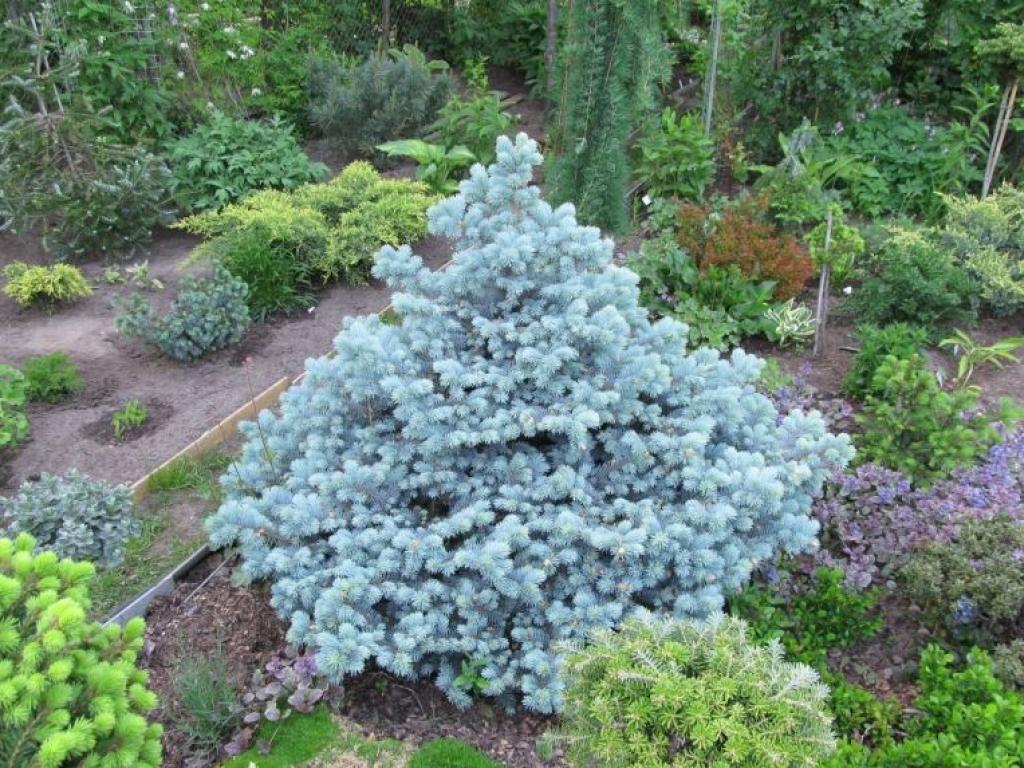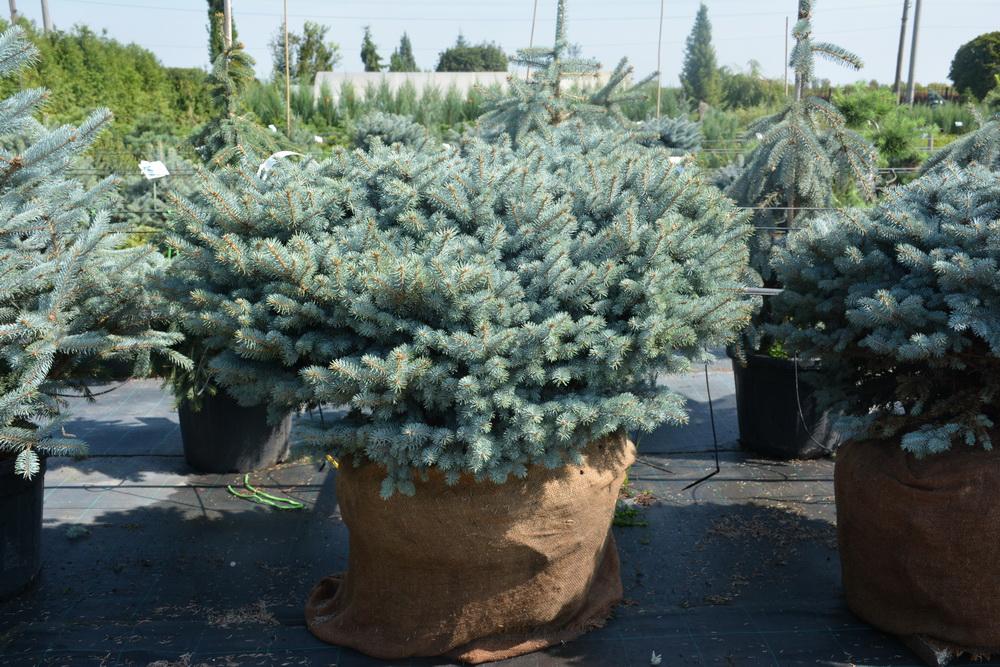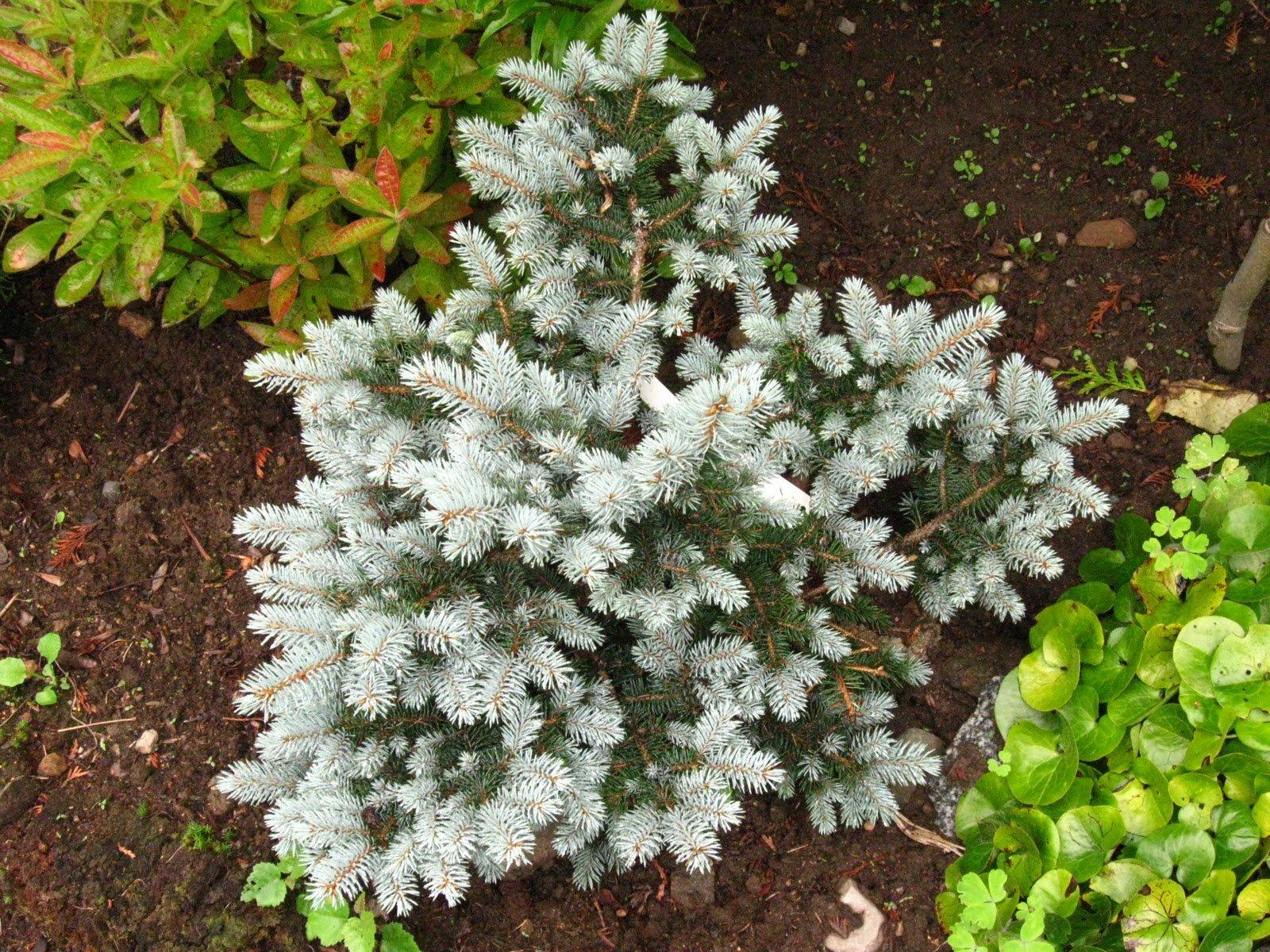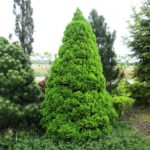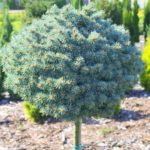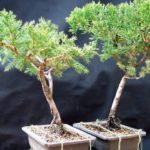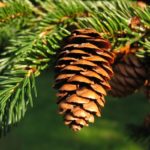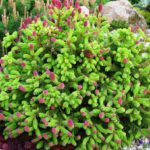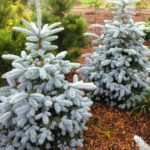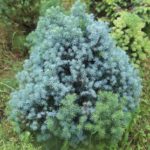Glauka Globosa spruce is a group of dwarf coniferous plants that are distinguished by their excellent decorative qualities. Therefore, this culture is often used in landscape design. It is used to decorate gardens and personal plots. To get a beautiful and strong crop, it is important to carry out planting work correctly. High-quality plant care is of no small importance.
Description of the tree
Blue spruce was first produced in 1937.This crop was developed by breeders from the Netherlands. Since 1955, the tree began to be actively cultivated in Europe. Subsequently, it was included in all catalogs for landscape designers. This culture has gained great popularity and has become very in demand.
Glauka Globosa spruce is predominantly found in regions dominated by cold and moderately temperate climates. It grows in Europe, Russia, North America. The plant grows well in multi-component soil. It reproduces easily and can withstand changing weather conditions.
This culture is characterized by the following features:
- By the age of 10, the tree reaches a height of 1 meter.
- The crown grows up to 1.5 meters wide.
- The needles are 1.2 centimeters long. It is characterized by 4 sides.
- The needles are sharp and dense.
- The color of the needles remains constant throughout the entire growth period.
- Flowering occurs in July.
- Trees that are 20-25 years old develop female cones.
- Male cones form during the first years of growth. They are characterized by a cylindrical shape and a slight elongation downwards.
Spruce of this variety is propagated by seeds. This method involves growing a tree in one place for many years. This variety is considered relatively young. Therefore, it is impossible to establish the maximum size of a tree. It is now believed that the annual growth of the crop is 5-8 centimeters.
Landing
Dwarf spiny spruce is considered not particularly demanding on growing conditions. The culture has a high degree of winter hardiness. In addition, it easily withstands drought. However, to grow a healthy and beautiful crop, experts advise to carry out planting work correctly.
Spruce of this variety is considered a light-loving tree that needs to be planted in well-lit areas. They should be spacious and open. Of no small importance is the presence of high-quality protection from drafts and cold winds.
The culture can grow in partial shade. However, in this case the needles will become less saturated in color. Spruce grows and develops well in light and nutritious soil, which has a low or medium level of acidity.
The plant responds well to sandstone or loam. The tree also develops well in heavy clay soil. However, in this case, he needs to create high-quality drainage. When carrying out planting work, it is important to take into account that the perennial crop does not tolerate too dense soil or high humidity. In this case, there is a high probability of rotting of the roots, which will lead to the death of the plant.
Planting work should be carried out from the end of April to the end of June. In this case, it is recommended to choose a young seedling 3-6 years old, which has a closed root system. It is important that the planting material has living green needles and dense shoots of a bright color. The best option is to purchase planting material from specialized nurseries or stores.
To plant a spruce of this variety, it is recommended to perform the following steps:
- Make a depression the size of which is 2-3 times larger than the roots.
- Mix part of the removed soil with turf, leaf soil, peat and sand in a ratio of 2:2:1:1. You also need to add 100 grams of nitroammophoska to the composition.
- Make a drainage layer at the bottom of the recess. In this case, it is permissible to use pebbles, expanded clay, and crushed brick.
- Place a layer of fertile soil on the drainage layer. Its size should be 15-20 centimeters.
- Place the seedling in the hole and carefully straighten the root shoots.
- Cover the plant with soil so as to leave the root collar on the surface.
- Lightly compact the soil and water thoroughly. To do this, you should use distilled water. It is recommended to take 40-50 liters for 1 crop.
- Cover the tree trunk circle with a mulch layer. For this, it is permissible to use peat or bark.
Care requirements
Spruce Glauka Globoza is easy to care for. However, in the first year of its development, it is necessary to strictly observe the main agrotechnical rules.
How to water and feed
Young spruce Glauca Globosa is characterized by a compact root system that cannot fully absorb moisture and nutrients from the soil. Therefore, the plant needs regular moisture. In the first year of growth, watering the plantings is required 2-3 times a week. In this case, it is recommended to take into account the degree of drying of the top layer of soil.
It is important to avoid prolonged drying out of the soil. Otherwise, the tree will not be able to take root. Providing the crop with sufficient moisture in hot summer weather is of particular importance. At this time, the plant needs to be watered every other day, using 10-12 liters of water.
The spruce needs to be fertilized 2 times during the season. The first portion of useful elements should be added in the spring. To do this, it is recommended to use mineral complex fertilizers, which are designed specifically for conifers. It is also permissible to use nitroammophoska. For 1 square meter it is worth taking 30-40 grams of the substance.
Loosening and mulching
Glauca Globosa spruce requires regular loosening.It is also recommended to mulch the soil. In this case, the tree trunk circle should be covered with peat, loose compost or pine bark. Its thickness should be 20 centimeters. This procedure helps to retain moisture in the soil, reduce the amount of watering and protect the sprouts of the young crop from freezing in winter.
It is necessary to loosen the soil to a shallow depth. This should be done 5-7 centimeters after each watering. This manipulation helps saturate the soil with oxygen and useful elements. As a result, it ensures the development of spruce roots.
Preparing for cold weather
This spruce variety is considered frost-resistant. The tree can withstand temperatures down to -30 degrees without shelter. In order to protect young plantings from freezing roots in the first year of growth, experts advise covering them with spruce branches. At the beginning of spring, you should make sure that there is no ice or snow on the surface of the needles. Otherwise, the needles will turn yellow and fall off.
Trimming
Spruce of this variety is characterized by a beautiful crown, so there is no urgent need for its formation. However, sometimes the tree is pruned as part of its maintenance. The plant tolerates pruning normally. It is important to carry out the procedure correctly.
Without compromising decorativeness, it is permissible to cut only young branches. It is recommended to remove old ones only if damaged or infected. In this case, the affected area must be treated with garden varnish or special paint.
When planting spruce on a site, it is important to immediately determine the shape of its crown. If pruning begins in a timely manner, the crown will be able to be shaped into a cone, ball, or oval. It can also take on the shape of a hemisphere.
It is worth noting that the Glauka Globoza spruce will not be able to obtain a cushion shape without pruning.This plant tends to grow wider than tall. When the top is removed at a young age, several new ones will appear in this place. If you control the growth of a tree by pruning, you will be able to get an unusually shaped crop. At the same time, the forms grafted onto the trunk must be trimmed regularly.
Disease and pest control
This spruce has a small height and is undemanding to care. At the same time, it is susceptible to diseases that are characteristic of coniferous plants. Rust is considered one of the most dangerous pathologies. When this disease develops, the following symptoms occur:
- needles falling off;
- change in shade of needles;
- the formation of rusty growths on the trunk.
The appearance of rust is associated with the influence of various factors. Infection is often caused by improper care, excessive moisture, and soil diseases. To cope with this disease, it is necessary to remove the affected shoots and treat the crown with such agents as “Gault”, “Ridomil”, and Bordeaux mixture. After 1-2 months, some of the plants are completely restored.
To cope with this infection, you need to get rid of the affected shoots, collect and destroy infected needles. It is also recommended to treat the needles with chemicals. For this, use “Ridomil” and a solution of copper sulfate with a concentration of 2%. If necessary, affected plants can be cut down. There may also be a need for spot thinning.
In addition to diseases, Glauka Globosa spruce can suffer from insect attacks.When trees are infested with spider mites, sticky webs appear on the needles. The shade of the needles also changes and the development of the culture stops. To cope with parasites, you need to use acaricides. The most effective products from this category include “Fitoverm” and “Aktara”.
Another dangerous pest is the bark beetle or sawfly. This parasite eats spruce bark and leads to the death of the plant. The damage to the crop is indicated by the appearance of small holes on the surface of the bark. To combat insects in early spring, it is necessary to treat the bark with special means and install pheromone traps.
How does spruce reproduce?
Spruce of this variety should be grown by specialists. Specialized nurseries have materials and tools for maintaining young seedlings. Despite this, it is also quite possible to grow a spruce yourself. To do this you need to use the following methods:
- seed method;
- graft;
- cuttings
For self-propagation of spruce, it is recommended to use the cutting method. This option allows you to obtain additional specimens from the main plant for planting on the site. Spruce of this variety is not usually grafted. This is due to the risk of obtaining an unpredictable result.
Through seeds
Coniferous plants are rarely propagated by seed. However, the Glauka Globoza spruce may well reproduce using this method. To begin with, it is important to choose the right seed material for planting. High-quality seeds are sold in special nurseries or collected independently. After which they must be stratified for 1-2 months.
When propagating spruce by seeds, you must adhere to the following rules:
- It is recommended to use 2 grams of seeds per 1 square meter of beds.
- The depth of burial should be 4-5 times greater than the length of the seeds.
- After the sprouts appear, it is worth thinning out. In this case, it is necessary to select the most powerful copies.
- It is recommended to plant plants 5-8 years old in a permanent place.
Through cuttings
For cuttings, you can separate the shoot from the tree at any time of the year. In this case, it is important to leave a fragment of bark from the old shoot. At the bottom of the cutting you need to remove the needles and treat this area with a growth stimulator. After which it is recommended to immerse the shoot in a mixture of perlite, sand and peat.
The planted cuttings need to be moved to a dark and cool place. During rooting, it is recommended to monitor soil and air humidity parameters. As the cuttings grow, they should be replanted several times. When shoots appear on the planting material, they must be placed in a dark place with spot watering until the next season.
Application
Glauka Globoza spruce is a dwarf crop that is small in size. Therefore, several seedlings are usually planted on plots. Designers use them to delimit space, create hedges, or draw attention to certain areas.
A characteristic feature of the plant is its blue needles, which retain their color all year round. In addition, when direct sunlight hits the needles, they shimmer with silver. Therefore, spruce of this variety is considered very popular among landscape designers.
To introduce a plant into the general scheme of the site, it is permissible to use the following schemes:
- plant as a hedge;
- use in a composition - in this case, the crop can be combined with flowers, trees and conifers;
- decorate rockeries and rock gardens.
Glauka Globosa spruce is considered a popular crop that has many advantages. It has excellent decorative properties and fits well into the design of any site. At the same time, it is important to provide the culture with quality care.

